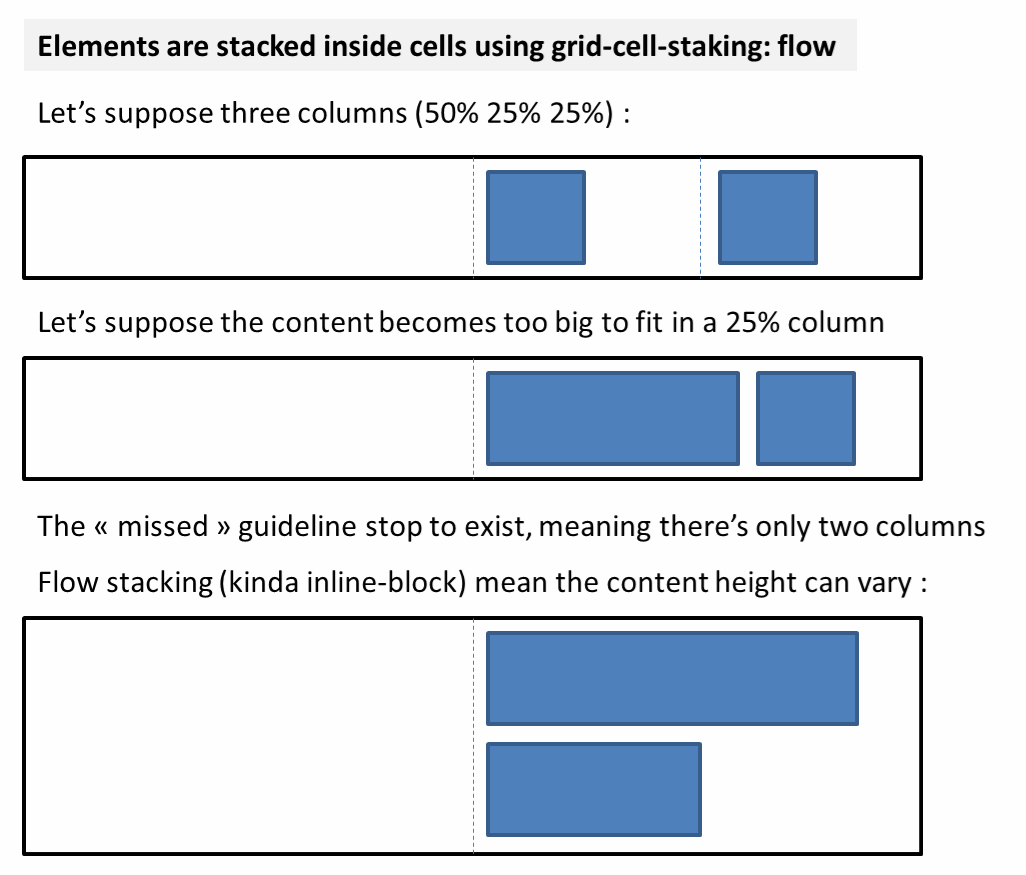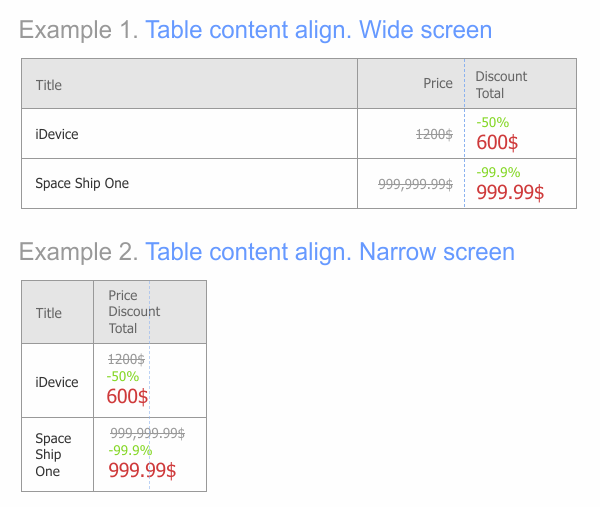- From: François REMY <fremycompany_pub@yahoo.fr>
- Date: Fri, 24 Feb 2012 22:30:55 +0100
- To: "Phil Cupp" <pcupp@microsoft.com>
- Cc: "CSS 3 W3C Group" <www-style@w3.org>, "Alexander Shpack" <shadowkin@gmail.com>
- Message-ID: <400D0D17781242A8A9E57CC1E77AFA99@FREMYD2>
Another notable difference between his proposal (guidelines) and grid I think I grasped is the fact guidelines do not have "proven" existence in the sense they may be ignored (resulting in a cell fusion) if there's an element who breaks them. How (and if) that behavior can be added to grid is an open question, however. The main problem is that a "grid separator" can be broken by the last element of the grid, resulting in a full recomputation of the layout of the grid, since two columns now have been merged. Merging column is possible due to a "grid-cell-stacking: flow" equivalent which makes all element inside a cell child of some anonymous box: when the box can't display all columns horizontally, some are merged and stacked vertically (or in flow, in function of what you specify). While this may seems complex, there are cases where it helps to keep consistent look&feel in environements when you have no control in the final width of your grid. To achieve the same result using a grid, you need a media query or a script that change the grid-template in function of the size of the grid. -----Message d'origine----- From: Phil Cupp Sent: Friday, February 24, 2012 9:33 PM To: Alexander Shpack ; www-style Subject: RE: Proposition. Positioning content with guidelines > From: Alexander Shpack [mailto:shadowkin@gmail.com] > In continuation to the topic > http://lists.w3.org/Archives/Public/www-style/2010Sep/0097.html > This is my second attempt, I changed the guideline declaration, make more > examples. Hi Alexander, Before jumping to a new solution I think it would be helpful to articulate the problems you'd like to see solved. Maybe some of them already have solutions or some could be solved with minor changes to existing specs and maybe some problems shouldn't be solved with CSS. It's difficult for me to reverse engineer what those problems are by studying the beginnings of a new specification. >From your discussion with Francois REMY it seems one of the perceived >problems may be that everything must be explicitly positioned on the grid, >and for some scenarios it might be simpler (or necessary) to infer >something about the proper position of a grid item based on its source >order or other CSS properties. Does that sound right? If so, then I think Francois has it right: the grid auto placement feature is meant to address these issues, but still needs some work. Now is a great time to highlight what scenarios are important to solve with the auto placement algorithm. What would really be helpful for me is a list of layouts that you'd like to achieve that you think can't be accomplished through some combination of our existing layout types, and why it's important to achieve those using CSS (in particular with the grid). -Phil
Attachments
- image/gif attachment: Difference_between_guidelines_and_grid.gif

- image/gif attachment: grid-vs-guidelines-1.gif

Received on Friday, 24 February 2012 21:31:28 UTC